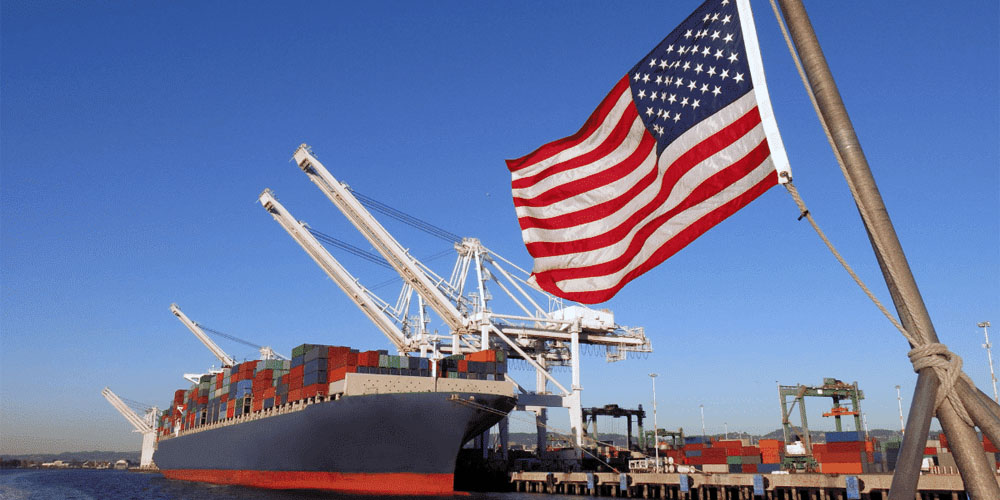As the United States approaches the 2024 presidential election, one of the key economic proposals from Donald Trump is drawing significant attention. If re-elected, Trump plans to implement a 10% tariff on all imported goods. This sweeping measure is designed to protect American jobs and generate revenue to support the extension of his 2017 tax cuts. However, the potential repercussions of such a policy are extensive and multifaceted, with implications for consumers, businesses, and international relations. This article explores the possible outcomes of Trump’s proposed tariffs, providing a comprehensive analysis of their impact on the U.S. and global economy.
Trump’s rationale for imposing tariffs is rooted in his “America First” policy, which prioritizes domestic job creation and economic growth. By making imported goods more expensive, the tariffs are intended to encourage consumers and businesses to buy American-made products. This approach, however, is not without its challenges. While it could boost domestic manufacturing, it may also lead to increased prices for consumers and higher production costs for businesses that rely on imported materials. The effectiveness of this strategy hinges on the balance between protecting jobs and maintaining economic stability.
One of the most immediate consequences of the proposed tariffs would be a rise in consumer prices. Tariffs on imported goods typically result in higher costs being passed on to consumers. As a result, everyday items, from electronics to clothing to food, could become more expensive. Economists estimate that the average American household could face an additional $1,700 in annual expenses due to these tariffs. This burden would disproportionately affect low- and middle-income families, who already allocate a significant portion of their income to essential goods. The rise in prices could also contribute to inflation, exacerbating existing economic pressures.
American businesses, particularly those dependent on imported materials, would also be significantly impacted. Higher costs for raw materials could lead to increased production expenses, potentially squeezing profit margins or leading to higher prices for consumers. Small and medium-sized enterprises (SMEs), which often lack the resources to absorb such costs, could be particularly vulnerable. Furthermore, U.S. businesses that export goods could face retaliatory tariffs from other countries, making their products less competitive in international markets. This could result in decreased exports and negative effects on industries such as agriculture, manufacturing, and technology.
The global trade landscape would not remain unaffected by these tariffs. Relations with key trading partners, including the European Union, China, and Canada, could become strained as they respond with their own tariffs. This escalation could lead to a trade war, disrupting global supply chains and increasing economic uncertainty. The interconnected nature of the global economy means that the repercussions of tariffs would ripple beyond U.S. borders, potentially slowing economic growth worldwide and affecting countries that rely heavily on exports to the United States.
In the long term, the imposition of tariffs could lead to shifts in global supply chains. Companies might relocate production to countries not subject to U.S. tariffs, altering trade patterns and investment flows. Additionally, American businesses might find it more challenging to compete globally due to higher production costs and reduced market access. This could stifle innovation and slow economic growth, undermining the very goals the tariffs were intended to achieve.
Geopolitical factors further complicate the potential impact of Trump’s tariffs. The imposition of such broad measures could strain diplomatic relations and contribute to broader geopolitical tensions. The European Union, for example, has already signaled its intent to counter U.S. tariffs with its own measures. Similarly, China has historically responded to U.S. tariffs with retaliatory actions. These dynamics could lead to an escalating cycle of trade barriers, with significant consequences for global stability and international cooperation.
While the proposed tariffs carry significant risks, they could also provide certain benefits. For specific industries, tariffs might offer protection from foreign competition, fostering job growth and economic development. Additionally, the revenue generated from tariffs could be used to fund public services and infrastructure projects. However, these potential gains must be weighed against the broader economic costs. The overall impact of the tariffs will depend on a variety of factors, including the responses of trading partners, the ability of American businesses to adapt, and the broader economic context.
Trump’s proposed tariffs on all imported goods present a complex mix of potential benefits and risks. While they aim to protect American jobs and generate revenue, they also pose significant challenges for consumers, businesses, and the global economy. The ultimate effect of these tariffs will depend on how they are implemented, the reactions of other nations, and the resilience of the U.S. economy. As the 2024 presidential election approaches, the debate over tariffs and trade policy will undoubtedly remain a central issue. Policymakers and voters alike will need to carefully consider the potential consequences of such sweeping economic measures.
